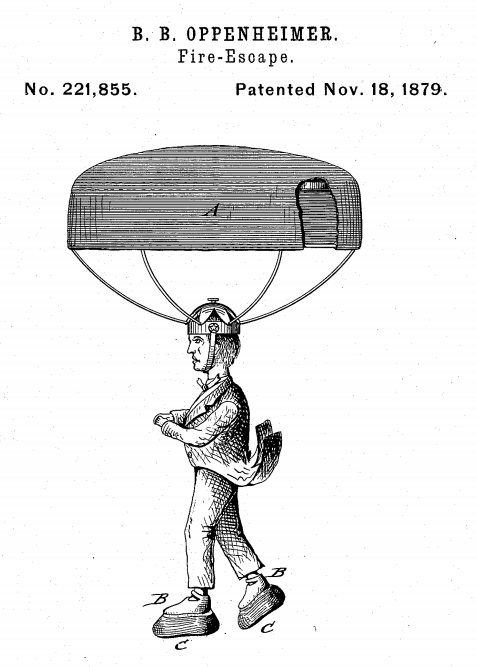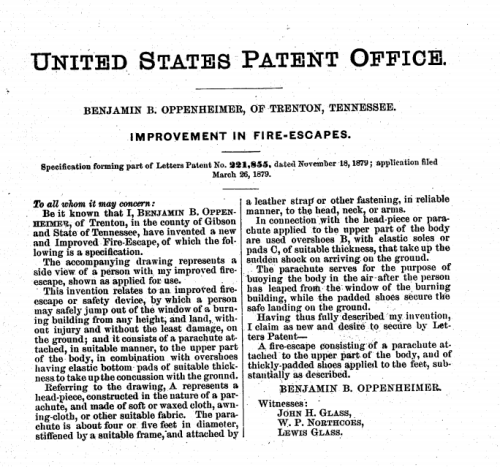

After making observation of the modern contemporary building structures we see today, we can note that architecture advances with the culture of its builders like anything else in society. As cities grew in the 19th century, such as New York or Chicago, The buildings grew taller and disasters, such as structure fires, became an obvious danger for anyone who found themselves on the upper floors of any tall building. So it seems natural that Mr. Oppenheimer would think of such an invention. During this time, structures were built to satisfy the new industrial needs of the time. The mass production line required a substantial work space. Large warehouses and factories, for example, which were filled with workers and were known to have frequent accidents due to poorly regulated working conditions. The advancements of construction due to new materials such as cast iron and glass contribute to a worldwide attraction to monumental buildings. In fact, the Eiffel Tower was built only a decade after this patent was made. thus, this period marked an important transitional period which lead to the beginning the age of skyscrapers.
The demand of industry, tightly spaced cities, and lack of regulation created a perfect environment for disaster. This patent shows a perfect example of the level of anxiety and fear due to the new developments made in construction. Obviously the inventor of this strange object was fearful of being trapped in a fire with no other option than being able to jump out of a window with rubber shoes and a parachute strapped to his neck. The anxiety felt by Benjamin Oppenheimer was justified when we consider The Great Chicago Fire of 1871. The fire burned for two days and caused nearly caused $200 million in damages. It’s also estimated that 300 people died in the fires. It’s unclear what caused the fire, but some people speculated that a cow kicked over a lantern in a barn, although no one is sure. After this horrific event, the next elected mayor promised to promote better fire codes in building construction. Ironically, The city of Chicago’s reconstruction efforts generated a huge economic boom which increased the population and set roots for their transition into the building of skyscrapers. So one could argue that the destruction of Chicago only laid ashes for a rebirth. Thus, we can understand Oppenheimer’s way of thinking, but unfortunately his idea didn’t make much headway.
Although the parachute hat is pretty wacky from my perspective, the U.S. military actually did refer to this patent in the application of the rubber soled boot which is designed for impact. My first thought when I see this invention is the risk of injury not only to the actual logistics of the parachute preventing heavy impact, but the strain put on the neck due to the leather strapping. I can only imagine wearing heavy rubber blocks on my feet and being pulled on by the drag caused by the parachute. As most people know, we have actually made applications of the metal fire escape systems that we see on the sides of buildings today. Scaffoldings which extend all the way to the roof of the building seem to have been the safer choice for fire emergency procedures.
References: